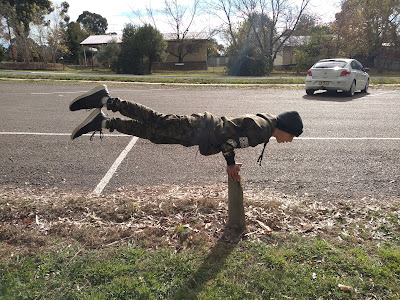I have never been overly good at growing carrots (Daucus carota sativus). For me they always take a long time to produce decent sized roots, they take up a lot of room for the small crop I normally get, and I am not all that fond of them. I don't really like raw carrots, but I do like them roasted.
Years ago I grew mixed colours of carrots. I liked the yellow ones and found them to be sweeter than orange. I found white to be bland. There were some purple skinned ones with orange cores, they were a little more spicey and also quite nice.
 |
| Black nebula carrots |
 |
| Organic Black Nebula Carrots |
I considered trying to breed carrots that were purple the whole way through. I started this project but didn't make much headway due to competing priorities.
This year I grew "Black Nebula Carrots". I had read about these and seen a few pictures, but nothing compared to what these beauties did in my garden. These carrots were purple from the skin right to the core.
These carrots are the darkest of the dark. They are so dark I would almost call them black. They really are incredible to see.
 |
| Black Nebula Carrot can have a slightly white core |
 |
| Purple carrots staining the cutting board |
The intense purple colour of black nebula carrots comes from anthocyanins. Anthocyanins are powerful antioxidants that are found in things like blackberries and blueberries. Given how dark these carrots are, they extremely rich in antioxidants and are incredibly healthy to eat, far healthier than regular orange carrots. If you are growing food at home, you may as well grow something that is healthier than you can get from the markets!
All of the carrots I grew have some amount of white, I believe this is largely influenced by environmental factors. Other than a small amount of white they have dark purple skin and flesh. The leaves are green and usually have purple leaf stalks.
I found mine did not produce overly long roots, but that may have been the growing conditions. I won't ever give them perfect growing conditions, so I assume this is how they will always grow for me. The roots were fat at the top and got skinny pretty quickly lower down.
The tap root had a lot of tiny side roots, making them appear a little hairy. This 'hair' looked weird but came off easily just by washing the dirt off the main tap root.
 |
| Black carrots cut and ready for roasting |
 |
| Organic black nebula carrots |
These dark purple carrots are an heirloom variety that breed true to type, so buying seed once and then saving seed for future crops is the best way to grow them. Carrots tend to produce enormous amounts of seed, and carrot tops can be replanted and allowed to flower, so it won't take long to select for the best performers in my garden. The flowers were white and slightly purple, and fed a lot of beneficial insect pollinators.
 |
| Black nebula carrots are dark purple |
 |
| Black Nebula carrots with potatoes |
I am told that these have undertones of berry taste. I can't taste berries at all. I found them to taste like a mix of carrot and beetroot, I really liked it. I don't like the taste of raw orange carrot, but I did like the taste of raw black nebula carrots. Roasted they tasted like roast carrot mixed with roast beetroot.
When we cut the carrots they stained things with their incredible purple juice. I am told that the juice can be used as a dye, and if you add some acidity that it will turn bright pink. I will have to try this out one day and see for myself!
These carrots hold their intense colour when cooked. We roasted the carrots, the roots turned an even darker black. They looked burned to a crisp as they were coal black, yet they were tender and delicious. They also stained potatoes that they were touching in the baking tray, making them interestingly purple too. What fun!
I have seen pictures of carrot juice made from black nebula carrots, and I have seen pictures of carrot cakes made with them. They look incredible. I am not a fan of carrot juice but will have to try to make the carrot cake one day as it is crazy dark purple.
 |
| Black nebula carrots are the darkest |
These black carrots are so high in antioxidants that my son ended up with black lips, teeth, and tongue, much like if he is eating mulberries. I put them on a white plate which was also stained with a purple berry like stain, again much like mulberries. Unlike a mulberry, the staining washed off easily.
I am planting all of the tops from the better carrots in order to let them regrow a little and collect some seed from them. While I don't expect them to grow another tap root, they can and should flowers and produce seed from a regrown carrot top. I have planted them in my greenhouse to ensure purity of seed as I assume people in the area may also grow carrots and I do not want cross pollination.
If I have some spare seed I plan to list it through my for sale page along with various other heirloom vegetable seeds, perennial vegetables, and interesting culinary herbs. If you are interested please take a look.









































